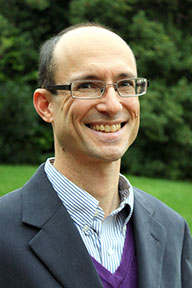Naming Abuse: Why “Comeback” Article Misses the Mark on Clergy Misconduct—Darryl W. Stephens
 In a recent article in RNS, reporter Emily McFarlan Miller asks, “Can pastors make a comeback after scandal?” Whether a pastor with a history of abuse in the pastoral role should ever be reinstated to a position of ministerial authority is an appropriate question, one with no easy answer. However, this article misses the mark.
In a recent article in RNS, reporter Emily McFarlan Miller asks, “Can pastors make a comeback after scandal?” Whether a pastor with a history of abuse in the pastoral role should ever be reinstated to a position of ministerial authority is an appropriate question, one with no easy answer. However, this article misses the mark.
Naming ministerial sexual abuse as “an affair” and focusing on the “moral failure” of the pastor without any attention to healing for victims perpetuate the common miscategorizations and misunderstandings that allow such abuses of power to continue occurring in our churches.
The language we use matters tremendously, both ethically and theologically. We cannot see significant aspects of the problem of clergy misconduct if our language distorts the picture. Only with clearer vision can we consider the possibility of restoration to ministerial leadership.
Abuse is Not an “Affair”
Abusing the power of the ministerial office is not “an affair.” By calling abuse “an affair,” news reports perpetuate the fiction that adult congregants or church employees are able to give authentic consent to sexual or romantic relationships with their pastors. Parishioners are not able to give genuine consent to sex in a ministerial relationship. To recognize the power differential inherent in the ministerial relationship (or the employer – employee relationship), we must stop calling it “an affair.”
 Clergy have a sacred trust given to them by the church, involving specific services of ministry. This trust is exercised through a fiduciary duty to act in the best interests of those they serve.
Clergy have a sacred trust given to them by the church, involving specific services of ministry. This trust is exercised through a fiduciary duty to act in the best interests of those they serve.
When a ministerial leader or other person in a position of public trust uses the power of that office for her or his own gratification, it is an abuse of power and a violation of this trust. For example, if Tullian Tchividjian was sexually involved with a parishioner, he did not have “an affair.” Rather, he abused the power entrusted him.
If we do not name abuses of power as abuse, we quickly lose sight of the issue of power. Consider, for example, Miller’s depiction of Paul Hand’s infraction: “what’s known in Christian circles as a ‘moral failure’ — in his case, an inappropriate relationship ….” This language, which Miller perpetuates, is precisely the problem.
Christians and the public at large need to be disabused of the idea that exploitation in a ministerial (or employee) relationship is merely “inappropriate” behavior, as if simply a violation of good manners and etiquette. It is abuse. Exploiting a congregant or employee for one’s own gratification is an abuse of power.
Sin and the Victim
The language of “moral failure” lures us into considering the perpetrator as the victim. The real victims of clergy sexual abuse are invisible and silenced in these articles.
According to Miller, Tchividjian, despite his apologies, clearly understands himself as a victim. He refers to his “affair” as a “career killer.” Thus, he would lead us to believe that the most important ethical consideration in his mind is the negative impact his history of abuse may have on his future career prospects in ministry. Furthermore, Miller quotes himas saying, “Sin is deep. It is real. It destroys. It deceives.” In this depiction, “sin” is the culprit and Tchividjian the victim.
The survey Miller cites contributes to this misidentification. LifeWay Research polled 1000 Protestant clergy, asking, “If a pastor commits adultery, how long, if at all, should the pastor withdraw from public ministry?” Again, we have a problem with the language. If the sin is “adultery,” our attention is deflected from abuse of ministerial power as the sin, hiding the real victims.
Healing before Restoration
When we name clergy sexual abuse as an abuse of ministerial power, we are better able to recognize the victims of this abuse: the exploited congregant, the congregation, clergy colleagues, and any family members affected. I have written on healing for the congregation elsewhere. The first consideration, however, should be for the congregant victim/survivor.
Absent in Miller’s reportings is any consideration of healing for the real victims of clergy misconduct. What about the congregants exploited by these pastors’ abuses? Where are they in the story? Why are the church leaders and congregations not talking about providing healing for the victim/survivors?
Are church leaders blinded to the existence of these victims because they consider the “inappropriate relationship” that might prove a “career killer” to their beloved pastor “an affair”?
We can learn to recognize, name, and call out clergy sexual abuse for what it is. In doing so, we begin a healing process that benefits many victim/survivors. Listening to and reporting on their stories is an important step in this process. Responding as a church through trauma-informed services is another important step. Providing confidential care for victim/survivors is yet another vital step. Several providers come to mind: the FaithTrust Institute, The Hope of Survivors, the General Commission on the Status and Role of Women in The United Methodist Church.
Reentry, Not a “Comeback”
Providing counseling and support services for abusive pastors is important, and restoration to ministerial leadership is possible in some cases. However, is it really accurate to call this process a “comeback,” as if an athlete recovering from a slump or returning from the disabled list? Perhaps it would be more accurate to call this process a “reentry program” for the ex-offender.
Let’s get our terminology right so that we can see the problem of clergy sexual abuse more clearly.
Darryl W. Stephens is director of United Methodist studies at Lancaster Theological Seminary. He is ordained in The United Methodist Church and has Ph.D. in Christian Ethics from Emory University. A frequent workshop leader, speaker, and writer on ethics in the church, he is co-editor of Professional Sexual Ethics: A Holistic Ministry Approach, and author of Methodist Morals: Social Principles in the Public Church’s Witness.
